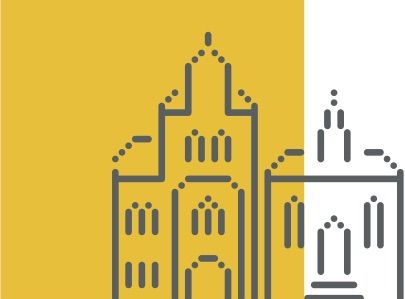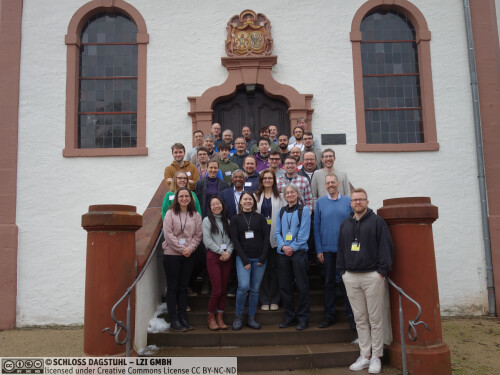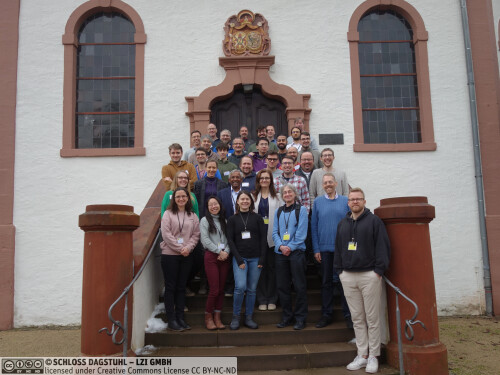Dagstuhl-Seminar 23491
Scalable Graph Mining and Learning
( 03. Dec – 08. Dec, 2023 )
Permalink
Organisatoren
- Nesreen Ahmed (Intel - San Jose, US)
- Danai Koutra (University of Michigan and Amazon - Ann Arbor)
- Henning Meyerhenke (HU Berlin, DE)
- Ilya Safro (University of Delaware - Newark, US)
Kontakt
- Michael Gerke (für wissenschaftliche Fragen)
- Simone Schilke (für administrative Fragen)
Programm
This Dagstuhl Seminar demonstrated a comprehensive exploration of the latest advancements and research directions in the field of scalable graph analytics and learning. The seminar featured a diverse array of talks that spanned foundational theory, innovative algorithms, and real-world applications. This event brought together leading researchers and practitioners to discuss cutting-edge developments in graph machine learning, massive-scale graph analytics frameworks, and optimization techniques for graph processing.
The seminar highlighted significant contributions to graph neural networks and representation learning, emphasizing such discussions as the problems related to the development of scalable algorithms, a proper benchmarking of the algorithms, several types of data reduction on graphs and various models including static, dynamic, and streaming graph data.
On the algorithmic front, several participants presented frameworks and algorithms designed for efficient graph analytics at massive scales in regular and streaming contexts. The topics included such broad problems as graph sparsification, various versions of graph partitioning, and matchings in big graphs. They highlighted the ongoing efforts to address the scalability challenges inherent in processing large-scale graph data. Notably, some emphasis was on accelerating optimization on graphs by machine learning.
The seminar also served as a platform for discussing the practical implications and applications of graph mining and learning in various domains. Examples of talks and discussions included such topics as the role of knowledge graphs, causal discovery and inference from social networks, as well as industry level graph mining. All these topics illuminated the broad applicability of graph analytics in social science, industry, and beyond. Moreover, these case studies provided valuable insights into how theoretical advancements translate into applications.
One of the working groups explored using graph neural networks for smaller kernels with an example of the maximum weighted independent set problem, focusing on understanding GNNs' ability to learn existing reduction rules, discovering new rules through GNN insights, and potentially enhancing graph reduction beyond current capabilities. Another working group discussed the ways of formulating the FAIR (Findable, Accessible, Interoperable, and Reusable) principles in an algorithmic context and promoting the ways to generalize future algorithm developement to bridge the gap between specialized practical applications and fundamental algorithms. Another working group focused on causal representation learning, aiming to identify high-level causal variables from observational data within graphs. This area is important for improving machine learning models and understanding causal mechanisms in various networks like social and protein interaction networks. Despite the importance, there's limited research on applying causal representation learning to graph data, a gap that hinders our ability to discern causal relationships in complex systems. The group emphasized the need for advancements in graph representation learning to address this challenge effectively.
In summary, the "Scalable Graph Mining and Learning" Dagstuhl Seminar successfully fostered discussions that bridged theoretical research and practical applications in scalable graph learning, mining, and analytics. Several potential outcomes include writing position and research papers as well as joint grant submissions.
 Danai Koutra, Henning Meyerhenke, and Ilya Safro
Danai Koutra, Henning Meyerhenke, and Ilya Safro
Graphs (networks) arise as a natural representation of complex systems across the sciences, e.g., social networks in computational social science, sensor networks in telecommunications, regulatory networks in genetics, functional brain networks in neuroimaging, and meshed surfaces in computer graphics and scientific computing. In many of these applications, graphs are large, complex, and dynamic (e.g., online social networks), which makes them a natural target for graph mining and machine learning (including deep learning) techniques.
Graph mining and learning are sub-disciplines of data mining and machine learning that are concerned with mining, learning and modeling the complex relational structure of data. The remarkable success of deep learning (also called representation or feature learning) in computer vision, natural language processing, and speech recognition has recently increased the interest in the application of deep learning in relational domains. This led to a surge of methods that focus on graph representation learning, where the goal is to learn a mapping that embeds nodes, edges, subgraphs, or entire graphs, as points in a latent low-dimensional vector space. Although the demand for scalable techniques for such methods is increasing in many real-world applications, most graph mining and learning techniques are resource-intensive, since scalability has not been a massive research focus in these areas yet.
Scalable analysis of graphs has been the subject of many recent research efforts, in particular in algorithm engineering (AE) and combinatorial scientific computing (CSC). With a focus on high performance, these communities enabled much larger graphs to be processed in a shorter amount of time. We expect attendees from AE and CSC to share their expertise on processing and analyzing large-scale graph data efficiently, e.g., with parallel and distributed computing techniques as well sophisticated algorithmic methods and data structures.
To summarize, this Dagstuhl Seminar aims at narrowing the gap between (i) researchers from AE and CSC who focus primarily on scalable graph algorithms and on how to implement them on parallel and distributed platforms, as well as (ii) researchers from the areas of graph mining and learning with a strong interest in algorithmic and scalability aspects. The participants from graph mining and learning also represent the domain expertise in real-world applications to a large extent, whereas the graph algorithms experts shall contribute expertise in high-performance algorithms and tools that address real-life graph problems. Our main high-level goal for the seminar is to discuss and achieve the synergies that become possible from bringing the two fields closer together.
 Nesreen K. Ahmed, Danai Koutra, Henning Meyerhenke, and Ilya Safro
Nesreen K. Ahmed, Danai Koutra, Henning Meyerhenke, and Ilya Safro
- David A. Bader (NJIT - Newark, US) [dblp]
- Maciej Besta (ETH Zürich, CH) [dblp]
- Aleksandar Bojchevski (Universität Köln, DE) [dblp]
- Konstantinos Bougiatiotis (Demokritos - Athens, GR) [dblp]
- Fabian Brandt-Tumescheit (HU Berlin, DE) [dblp]
- Ümit V. Çatalyürek (Georgia Institute of Technology - Atlanta, US) [dblp]
- Ayan Chatterjee (Northeastern University - Boston, US)
- Mikhail Galkin (Intel AI Lab - San Diego, US) [dblp]
- Ernestine Großmann (Universität Heidelberg, DE) [dblp]
- Kathrin Hanauer (Universität Wien, AT) [dblp]
- Mariya Ishteva (KU Leuven - Geel, BE) [dblp]
- George Karypis (University of Minnesota - Minneapolis, US) [dblp]
- Christine Klymko (LLNL - Livermore, US) [dblp]
- Danai Koutra (University of Michigan and Amazon - Ann Arbor) [dblp]
- Kenneth Langedal (University of Bergen, NO) [dblp]
- Johannes Langguth (Simula Research Laboratory - Oslo, NO) [dblp]
- Michelle Li (Harvard University - Boston, US)
- Fredrik Manne (University of Bergen, NO) [dblp]
- Ulrich Carsten Meyer (Goethe University - Frankfurt am Main, DE) [dblp]
- Henning Meyerhenke (HU Berlin, DE) [dblp]
- Davide Mottin (Aarhus University, DK) [dblp]
- Richard Peng (University of Waterloo, CA) [dblp]
- Bryan Perozzi (Google - New York, US) [dblp]
- Cynthia A. Phillips (Sandia National Labs - Albuquerque, US) [dblp]
- Alex Pothen (Purdue University - West Lafayette, US) [dblp]
- Ilya Safro (University of Delaware - Newark, US) [dblp]
- Michael Schaub (RWTH Aachen, DE) [dblp]
- Matthias Schimek (KIT - Karlsruher Institut für Technologie, DE) [dblp]
- Christian Schulz (Universität Heidelberg, DE) [dblp]
- Christian Sohler (Universität Köln, DE) [dblp]
- Frank Takes (Leiden University, NL) [dblp]
- Elena Zheleva (University of Illinois - Chicago, US) [dblp]
Verwandte Seminare
Klassifikation
- Data Structures and Algorithms
- Distributed / Parallel / and Cluster Computing
- Machine Learning
Schlagworte
- Graph mining
- graph machine learning
- (hyper)graph and network algorithms
- high-performance computing for graphs
- algorithm engineering for graphs



 Creative Commons BY 4.0
Creative Commons BY 4.0
